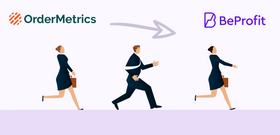How to Conduct Cohort Analysis for Your Shopify Store
Updated April 26, 2023

A cohort analysis is one of the most valuable tools Shopify store owners can use to understand their customers, top-selling products, and revenue growth opportunities. The more you care about your data, the more you’ll learn about growing your company.
Perfecting analytics using cohorts allows Shopify store owners to answer important questions about their company such as how much you should be investing in specific marketing strategies, or which customers deliver the most revenue.
» Struggling to analyze your customer's journey? Perfect your sales funnel with GA4
What Is a Cohort Analysis?
Cohort analysis involves tracking data from your store by segmenting users into groups. You can filter your “customer cohort” by a specific time period, marketing platform, or discount code.
By using cohort analysis, business leaders can generate meaningful insights into how well a product or service is performing over time. It’s also possible to learn more about the individual groups of customers you’re targeting, and how much value they bring to your brand.
Therefore, a successful cohort analysis will assist you in making intelligent decisions about how to adapt your marketing, sales, and pricing strategies, to create the most revenue.
» How do you calculate customer profitability? Follow this step-by-step guide for customer profitability analysis
Benefits of Cohort Analysis for Your Shopify Store
Cohort analysis can help you understand how different changes to your store impact your business, how specific marketing campaigns increase sales, and which customer segments are the most relevant to your business.
With a cohort analysis you can:
- Find your most valuable customers: Determine which of your customers are generating the most revenue, so you can work to improve customer retention with these clients.
- Identify why and when purchases drop off: Effectively prevent lost sales and boost your chances of constant conversions.
- Improve marketing campaigns: Determine how much you should be investing in customer acquisition, and which of your lead generation efforts are paying off.
- Implement new business strategies: Identify and implement new strategies like changing pricing structures and monitoring the impact on customers.
» Battling to monitor your store's profitability amidst these changes? Use these tips to perform a profitability analysis
How to Perform Your Own Cohort Analysis
Cohort analysis tools are the easiest way to collect, aggregate, and access the data you need. There are various solutions available, but some offer greater insights than others. For instance, BeProfit goes beyond the basics of simple lifetime value calculations to provide business leaders with insights into the core elements of profitability.
To perform a cohort analysis, you’ll need to:
1. Integrate Your Shopify Data
Use a cohort analysis tool that allows you to integrate your data directly from Shopify into your analytics system. This will make it easier to track all the information without copying and pasting tables and raw data into different environments.
2. Choose Your Cohort
Decide which group of customers you want to focus on. For instance, you might look into customers purchasing a specific product, or those who come to your Shopify store after clicking a Google or Facebook ad.
3. Select a Time Period
Cohort analysis involves looking at the behavior of customers over a specific period of time. For instance, if you want to see how customers respond to a new marketing campaign over a period of 1 month, you can use your cohort analysis tool to analyze the appropriate metrics over 30 days. BeProfit allows you to choose your time period on a weekly, monthly, or yearly basis.
4. Adjust Your Filters
Use your cohort analysis tool to focus on the information you’re most interested in. For instance, you can adjust your “base metric” to look at ROAS, gross profit, or repurchase rate. You can also update your data progression to an accumulated or marginal overview. BeProfit also allows you to change your “Calculation Scheme” between “Average Per Customer” or “Total Cohort”.
5. Conduct Your Analysis
Once you’ve added all the correct information to your cohort analysis tool, you’ll be able to view your metrics and make decisions based on the data provided. For instance, if you see that the ROAS of your target cohort increased gradually over the course of a month after you implemented a new marketing strategy, you’ll know this advertising effort is working for your brand.
If you’re struggling with reading your results, hover your mouse over each cell to view a tooltip that translates the numerical data in the cell into an easy-to-understand sentence.
» Discover the best apps for a Shopify cohort analysis
Exploring Cohort Analysis
Cohort analysis is an important tool for Shopify store owners, but it can also be a daunting concept for beginners. Using the right cohort analysis tool to synchronize and organize your data, like BeProfit, will help you to minimize the complexity involved in understanding your customer base.
» Want to explore what BeProfit has to offer? Browse BeProfit's features







